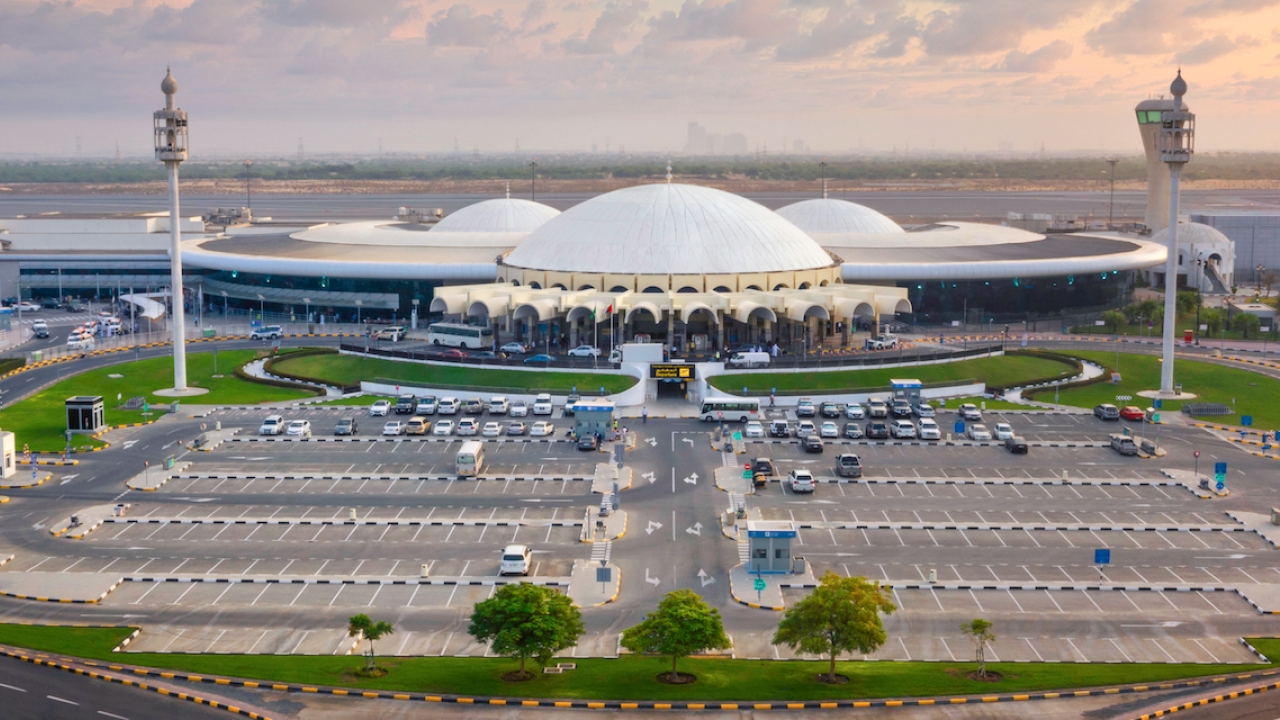Sharjah on the charge
Sharjah Airport has embarked on the next step of its major expansion programme.

Grand design: Expansion will more than double capacity. IMAGE: Sharjah Airport
The centrepiece of the latest stage of Sharjah’s growth is the start of construction on a major terminal expansion, designed to accommodate steadily-growing passenger numbers.
Sharjah’s crown prince and deputy ruler, Sheikh Sultan bin Muhammed bin Sultan Al Qasimi, laid the foundation stone for the terminal expansion in early January. This is the largest of a series of projects that will enhance the airport at a cost of AED2.5 billion ($653 million) and which are expected to be completed in 2027. The terminal expansion will account for more than half of the total cost.
The expansion will increase the terminal’s annual capacity from eight million to 20 million passengers, with the possibility of increasing it further, to 25 million, in the future.
The higher capacity is needed urgently. According to the recently finalised statistics for 2023, the terminal handled record numbers of passengers – more than 15 million.
The existing terminal covers slightly less than 70,000m². The terminal expansion will create almost 120,000m² of new space, together with the renovation of more than 12,500m² of the existing building.
Once complete, the new terminal will cover an area of approximately 190,000m².
The expansion will allow the airport to separate departing from arriving passengers, upgrade its luggage-handling system and increase the food and beverage area.
Other new facilities will include a new VIP building, an additional transit hotel for passengers, and an increase in the number of waiting areas.
Sharjah Airport is the home base for low-cost carrier Air Arabia, which is steadily expanding its fleet and route network. It currently has a fleet of around 70 Airbus A320/321s and has a further 120 A320neo-family aircraft on order. Not all of these will be based in Sharjah, but throughput of passengers at its home hub will undoubtedly increase as the new arrivals come on-line over the next few years.
In an indication of how important are the connections between the airport and its largest operator, the new terminal will have a separate entrance and check-in area for Air Arabia passengers, with another entrance and check-in area for travellers using other carriers.
As well as Air Arabia, the airport is a popular destination for airlines from the Indian subcontinent and MENA region. It is also a significant centre for cargo shipments.
To cope with the expected growth in passenger numbers, the number of aircraft gates will increase from 25 to 40. The number of check-in desks will more than double, from 48 to 105, while self-service check-in kiosks will increase from four to 22, with the potential to add another 24 in future. Self-service baggage drop points will grow from five to 11.
For incoming passengers, the number of baggage belts will increase from six to 12, in a new area.
The Sharjah Airport Authority has already completed a number of enabling works within the overall airport expansion project, including a luggage handling station for transfer passengers, which includes electric-powered ground handling equipment, as well as a new water treatment plant, warehousing and a new engineering building.
Reduction of emissions has been a priority when creating the new facilities, according to the authority.
Outside the terminal, a new landside road network will speed up arriving and departing road traffic and the number of car parking spaces will almost double, to just under 2,000.
Airside, the fuel hydrant system network for refuelling aircraft will be expanded and redistributed, and work is already under way to increase the number of aircraft stands, with 12 already completed and work on a further 12 under study. When the project is completed, Sharjah International will have 52 stands.
The expansion project will also establish a central utilities plant, covering items such as air conditioning, electricity and water supplies, main operations rooms and a new data centre.
Stay up to date
Subscribe to the free Times Aerospace newsletter and receive the latest content every week. We'll never share your email address.


